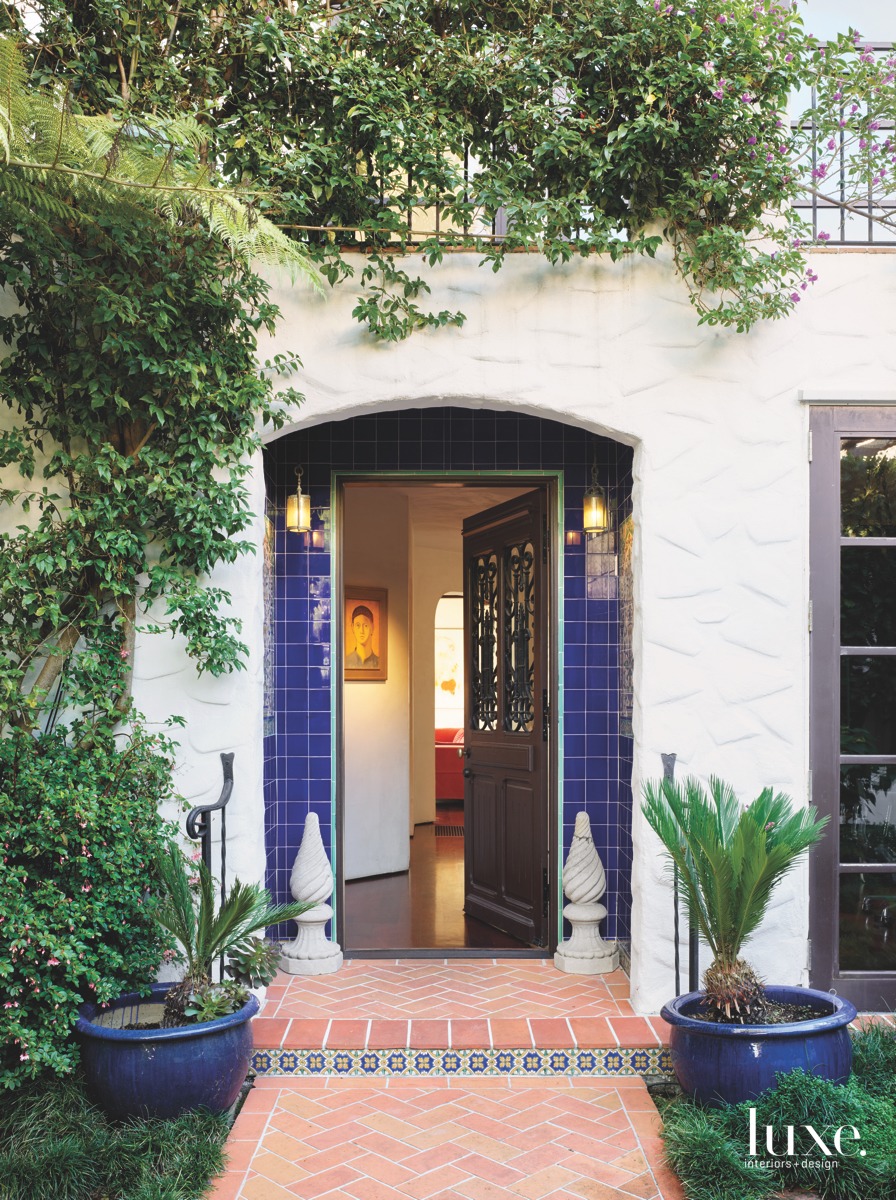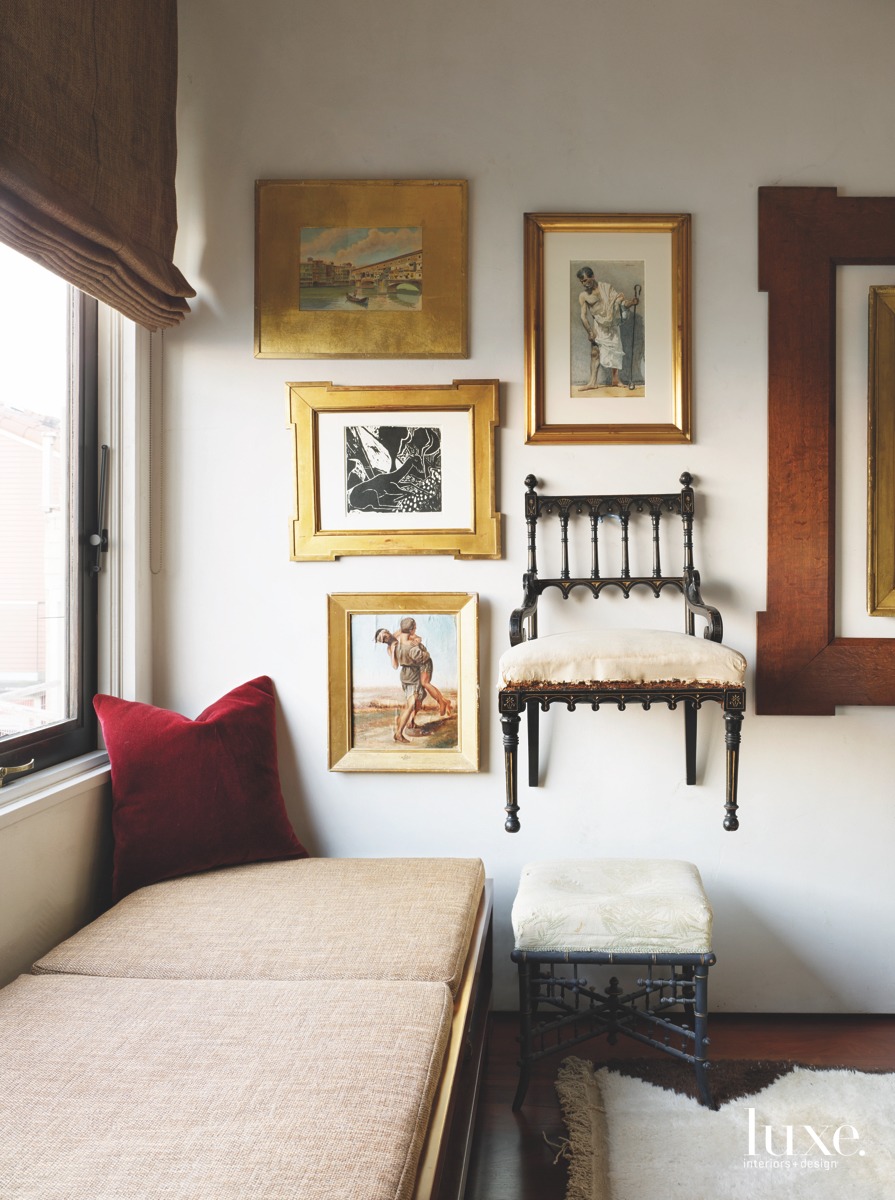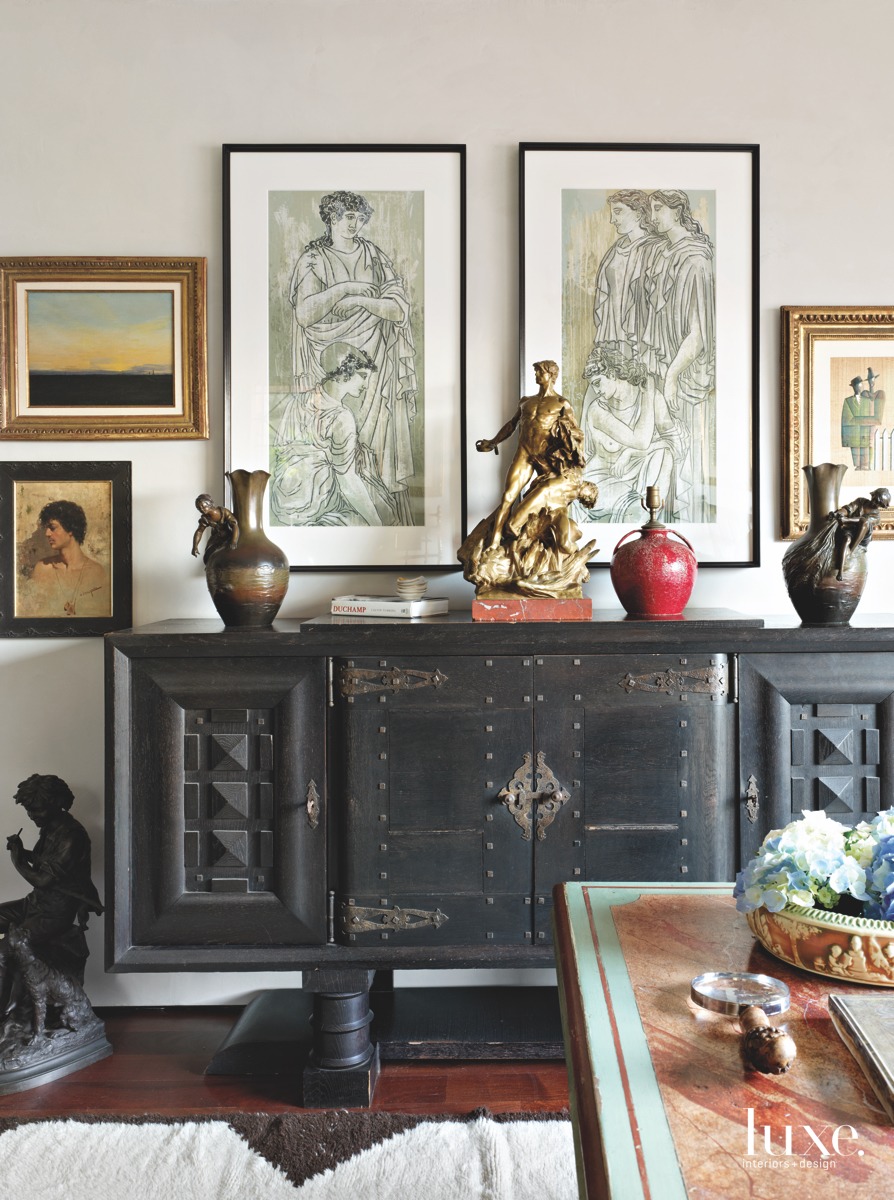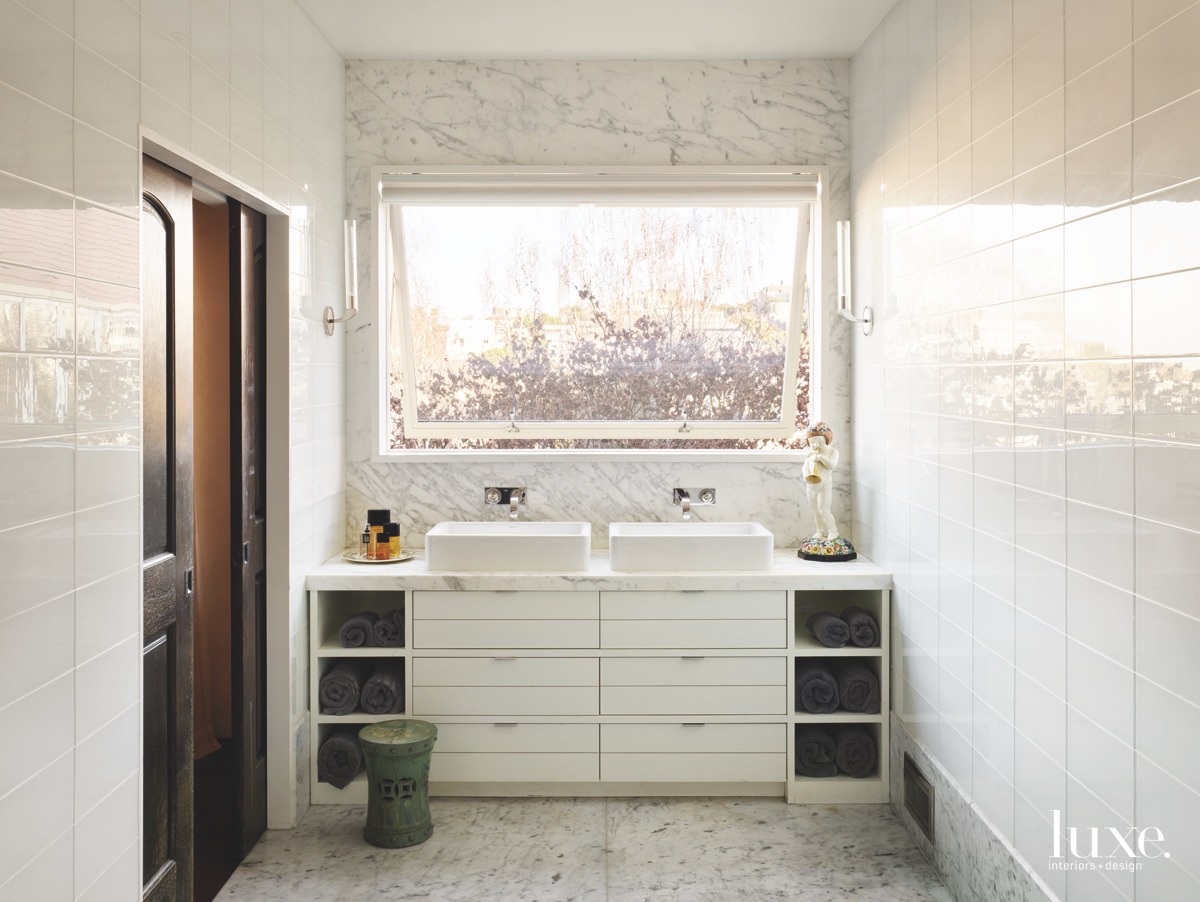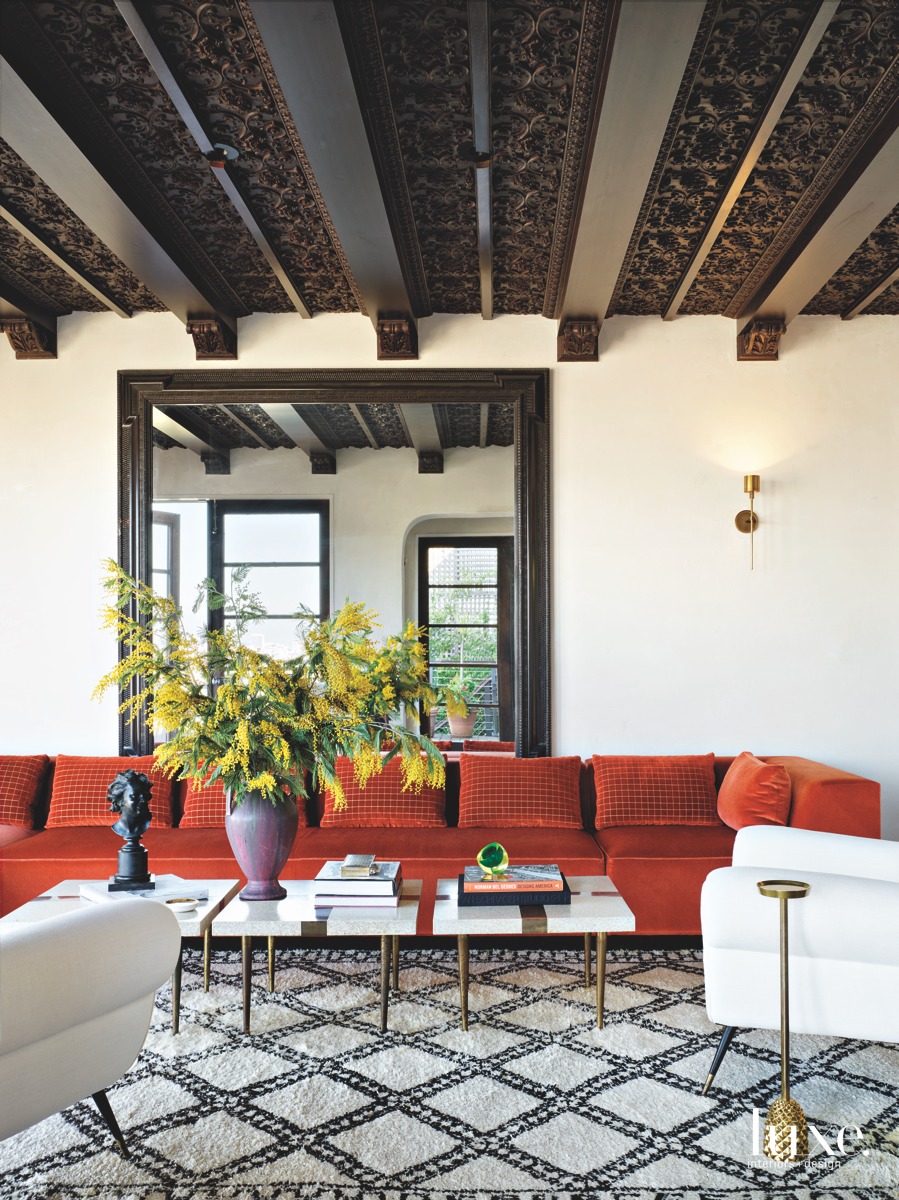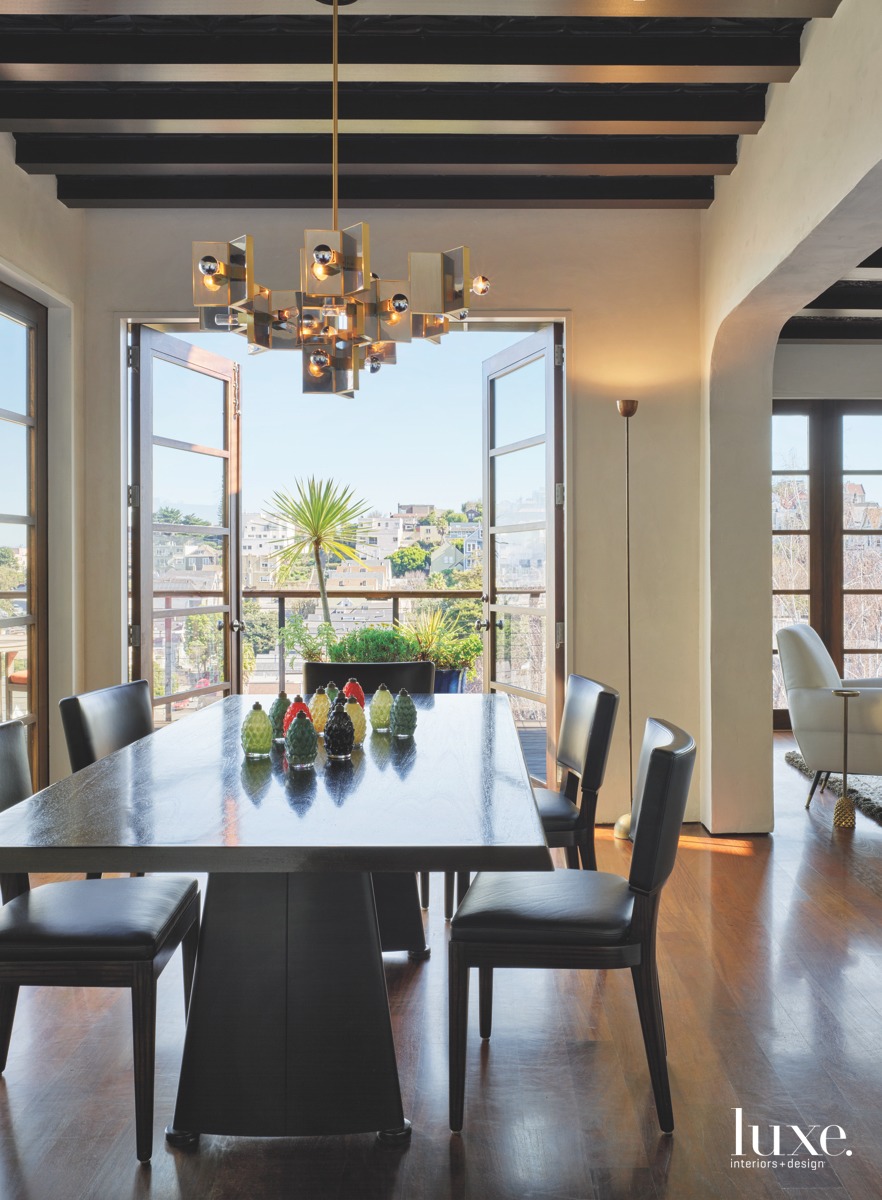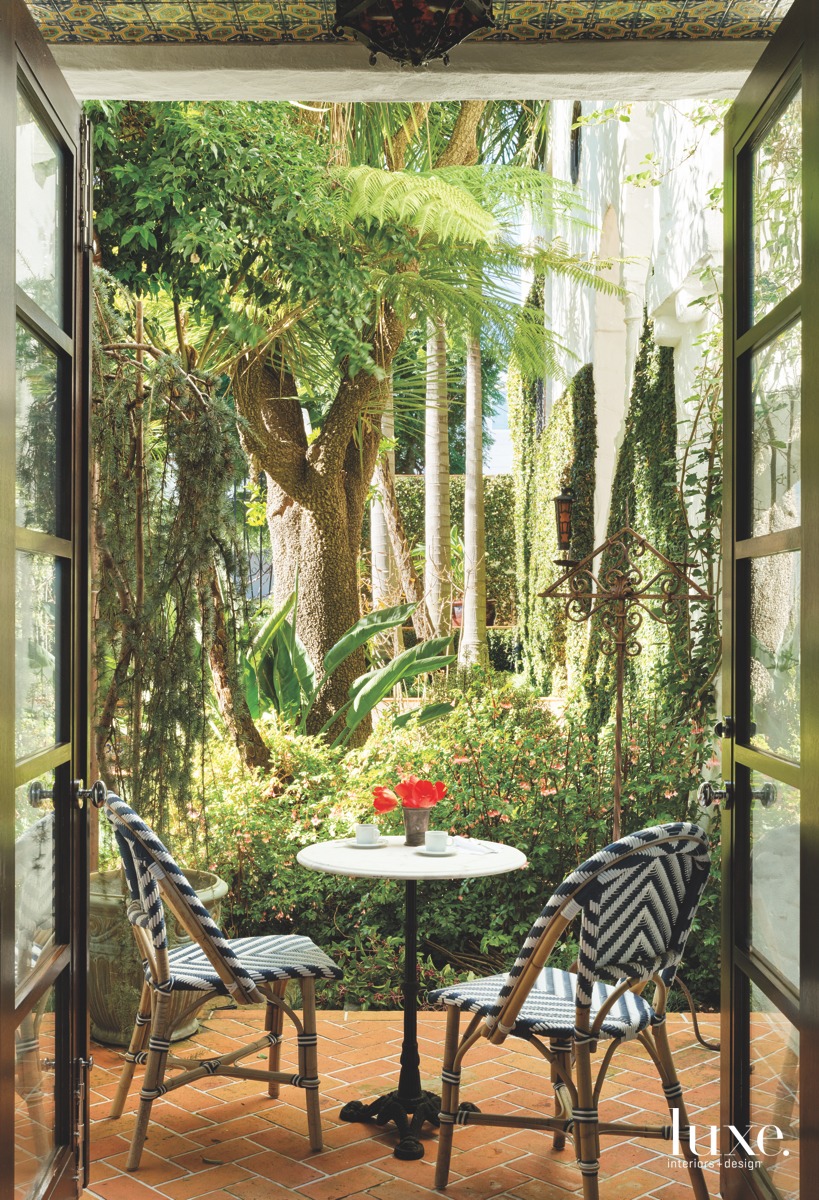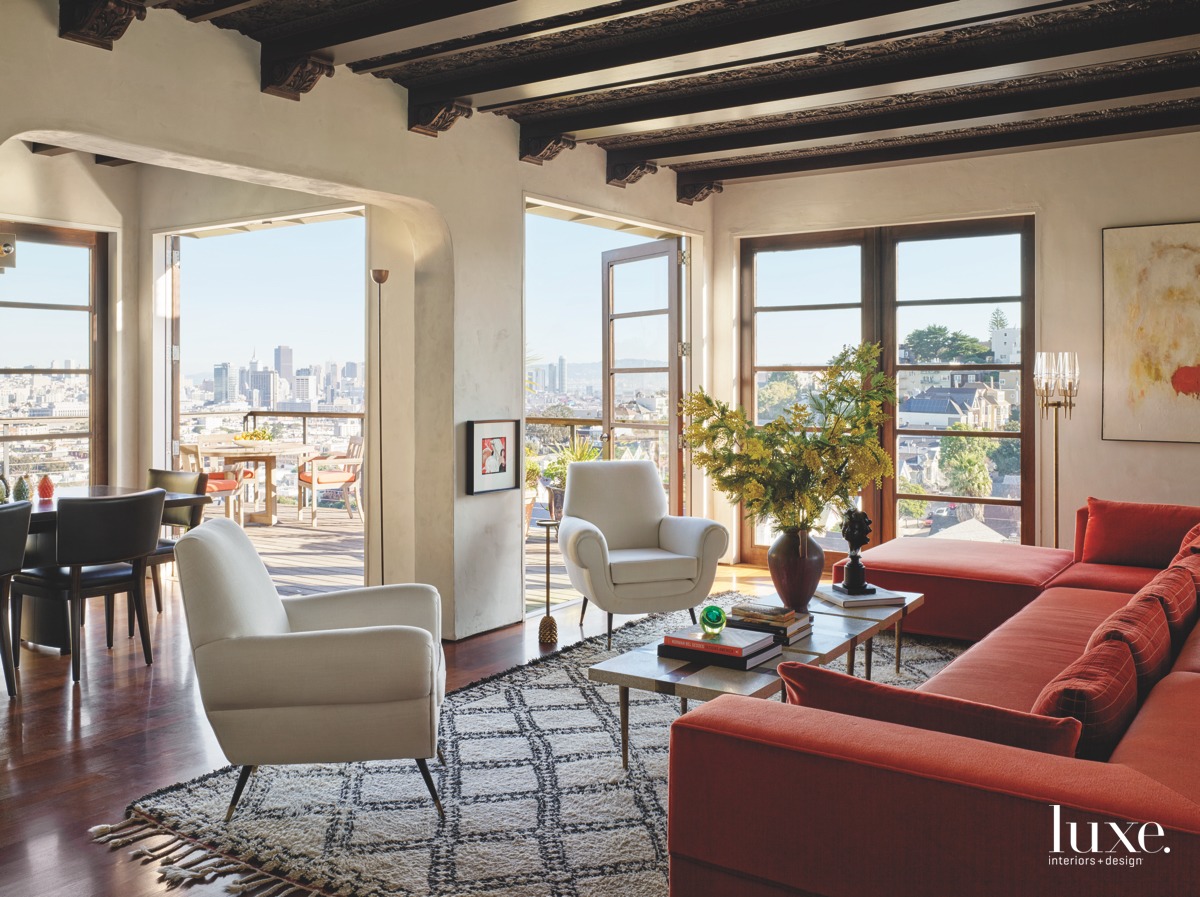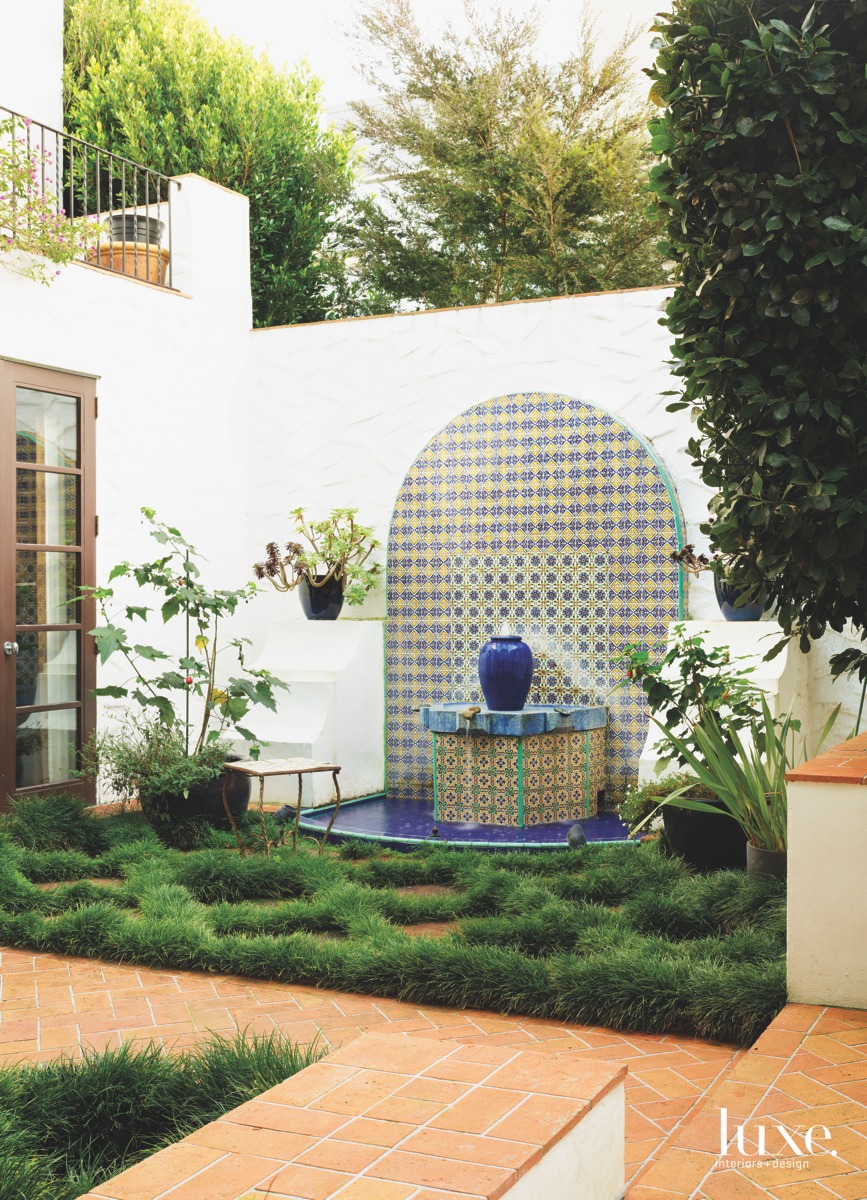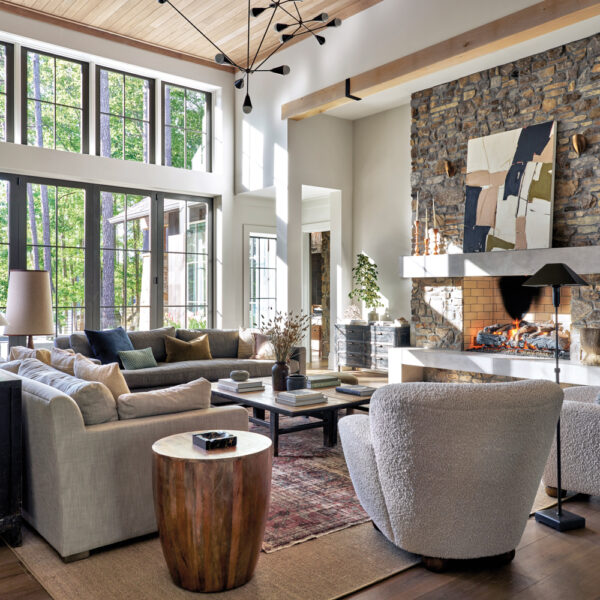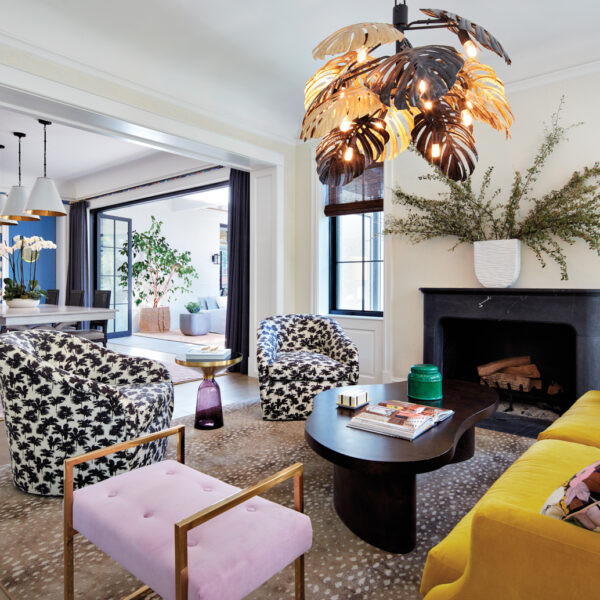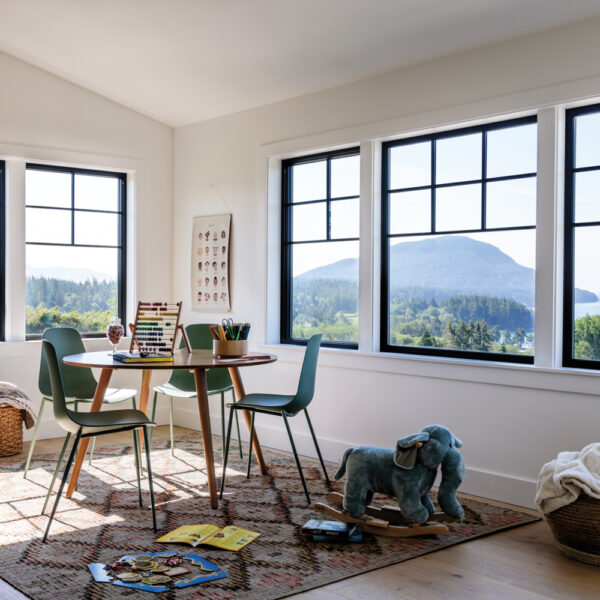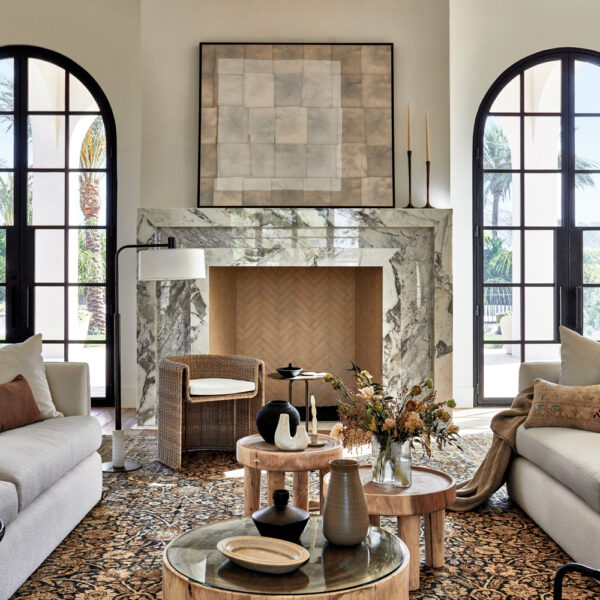Love is patient, and it’s a good way to describe the 17-year journey that lighting designer Jonathan Browning and his husband, Marco Heithaus, traveled to transform their Noe Valley home. The 1931 structure had become a down-at-the-heels bed and breakfast when the couple bought it in 1999; nearly two decades later, it has become a grand hilltop abode that combines Browning’s reverence for Mediterranean Revival architecture with Heithaus’ minimalist-modern instincts.
Despite its challenges, the couple saw enough promise in the B&B to undertake the home project–a venture that closely mirrored the growth of their business, Jonathan Browning Studios, where Browning is the creative director and Heithaus is the chief financial and operating officer. “This building was just a total disaster. There was nothing redeeming about it except the exterior architecture,” says Browning, noting that the façade bore a closer resemblance to the Spanish-influenced stucco homes that are endemic to his native Los Angeles than the Edwardian and Victorian architecture that’s more prevalent in San Francisco. Another bonus was its double lot, making the property twice as wide as its neighbors. “What we have is what no one gets in San Francisco–we have this massive front yard,” the designer says.
Browning, who handled the interiors and residential design, and Heithaus, who oversaw the construction, started the renovation process with the garden. They replaced an unremarkable front lawn with an exotic courtyard, sunken from the street and brimming with lush vegetation. “By the time the house was finished, the landscaping looked grown in already,” Heithaus says. They lived in the house more than two years before renovating inside–around the same time they were designing Browning’s first lighting collection in 2002. They removed the old lath and plaster to install new systems and insulation, and had thick, hand-troweled plaster applied over new drywall. They replaced all the flooring, window frames and doors with custom Honduran mahogany. Each new element came as they could afford it. “We were struggling,” Browning says, noting that he set up his drafting table under a tarp to avoid the construction dust. “We did the renovation in the most expensive way we could do it, but there wasn’t enough money left for decoration. People were wowed by the house, but politely underwhelmed by the decor.”
Yet, Browning and Heithaus were undeterred. The furnishings could wait while they got everything else right, like installing mahogany beams, decorative plasterwork and paneled coffers on the ceilings. “These are Renaissance Revival ceilings,” Browning says. “I didn’t want the Mexican look that a lot of homes in California have.” He made a deal with his friend, decorative painter Willem Racke, to paint the plaster. “We did a trade–he has some of my lighting,” Browning says. “He did this faux finish in mahogany to match the real mahogany beams. It makes the house beautiful, warm and special.”
The couple had achieved enough success by 2008 to purchase a warehouse downtown for their operations–just as the economy took a dive. To survive, they had to rent out their beloved home and move into the warehouse. “The irony is, we bought this building as a way to not work out of the house,” Browning says. Eventually, they moved back in, and Browning inked a deal to design lighting for RH, which gave the couple the resources they needed to complete the home’s interior design.
The idea was to infuse the revivalist architecture with a modern vibe. “I wanted all the work relating to surfaces to look original, as if we had simply restored this home–then furnished it in a very modern way,” Browning says. They turned to The Bright Group to source most of the clean-lined upholstered furnishings. Browning also incorporated vintage pieces that add warmth but maintain the contemporary feel, like 1950s terrazzo-and-brass cocktail tables in the living room; a 1960s chandelier over the dining table; and myriad accent pieces bought at the Paris Flea Market and in the Marrakesh souks. “I like the soul of pieces that start somewhere else,” he says. And while there’s a sprinkling of his light fixtures through the house, the statement pieces are by others. “It’s a little bit like being at work to see a bunch of my own lighting,” he says. “It’s refreshing to see someone else’s work to understand their genius.”
Heithaus, a modernist at heart, led the design for the sleek kitchen, where the counters and walls are covered in Carrara marble. “I like to cook and entertain,” he says. “So, the kitchen was a big deal for me.” Heithaus kept the walls free of cabinetry to preserve the clean look, and specified two long islands on wheels, so they can be moved around for entertaining inside and outside. Browning, ever the traditionalist, put his personal stamp on the office. “When I work at home, I want a world I can step in to that is from the 19th century,” he says. “It was the high point in American residential architecture.”
As a couple, they have renovated five houses in their 23 years together–and are currently working on another in Los Angeles–but this one stands out among the rest. “It wasn’t so much of a renovation as a reinvention,” Browning says, adding that he accumulated a library of books on period residential architecture in the process. “It allowed me more freedom to design with a look to the romantic past of California.”

